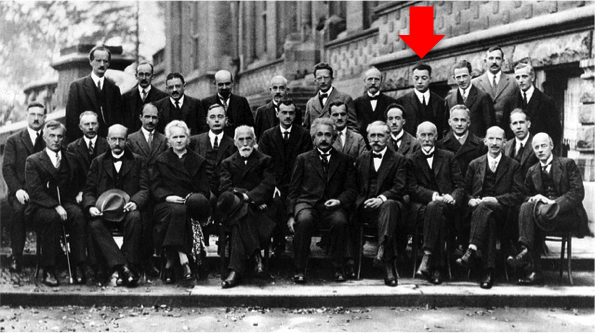The Pauli exclusion principle states that it is not possible for two electrons in an atom to have the same set of quantum numbers.

Wolfgang Pauli, an Austrian physicist, developed this principle in 1925, after considering evidences and proposals put forward by scientists in the early 1900s. These evidences and proposals include:
-
- Atoms with even numbers of electrons are relatively stable as compared to those with odd numbers of electrons.
- The maximum number of electrons a shell holds is an even one. Such a shell is called a closed shell.
- The number of electrons in closed shells is 2, 8 and 18 for n = 1, n = 2 and n = 3 respectively.
From the solutions of the Schrodinger equation for the hydrogen atom, the three quantum numbers ,
and
are integers, with
,
and
. Therefore, we have
|
1 |
0 | 0 | 1 |
|
2 |
0, 1 | 0 and -1, 0, +1 |
4 |
| 3 | 0, 1, 2 | 0 and -1, 0, +1 and -2, -1, 0, +1, +2 |
9 |
Comparing the total count and the total number of electrons in the first three closed shells, every
corresponds to an average of two electrons. If we associate each value of
with an orbital and assume an equal distribution of electrons among orbitals to achieve a stable state of minimum energy, each orbital can accommodate a maximum of two electrons. As mentioned in the previous article, Pauli introduced a fourth quantum number called the spin magnetic number
, which is related to the orientation of electrons in an atom, to fully describe the quantum state of the atom. Furthermore, the solution of the Schrodinger equation results in a zero probability of two electrons with parallel spins residing in the same orbital. It is therefore logical to assume that the relative stability exhibited by atoms with even number of closed-shell electrons is due to an anti-parallel orientation of an electron pair in each orbital. This implies that no two electrons in an atom can be described by the same set of quantum numbers. For example, the electron configuration of helium in the ground state is:

where the quantum state of one electron is or
, while the quantum state of the other electron is
or
. In other words, the Pauli exclusion principle states that
Each atomic orbital can hold a maximum of two electrons and that two electrons in the same orbital must have anti-parallel spins.
